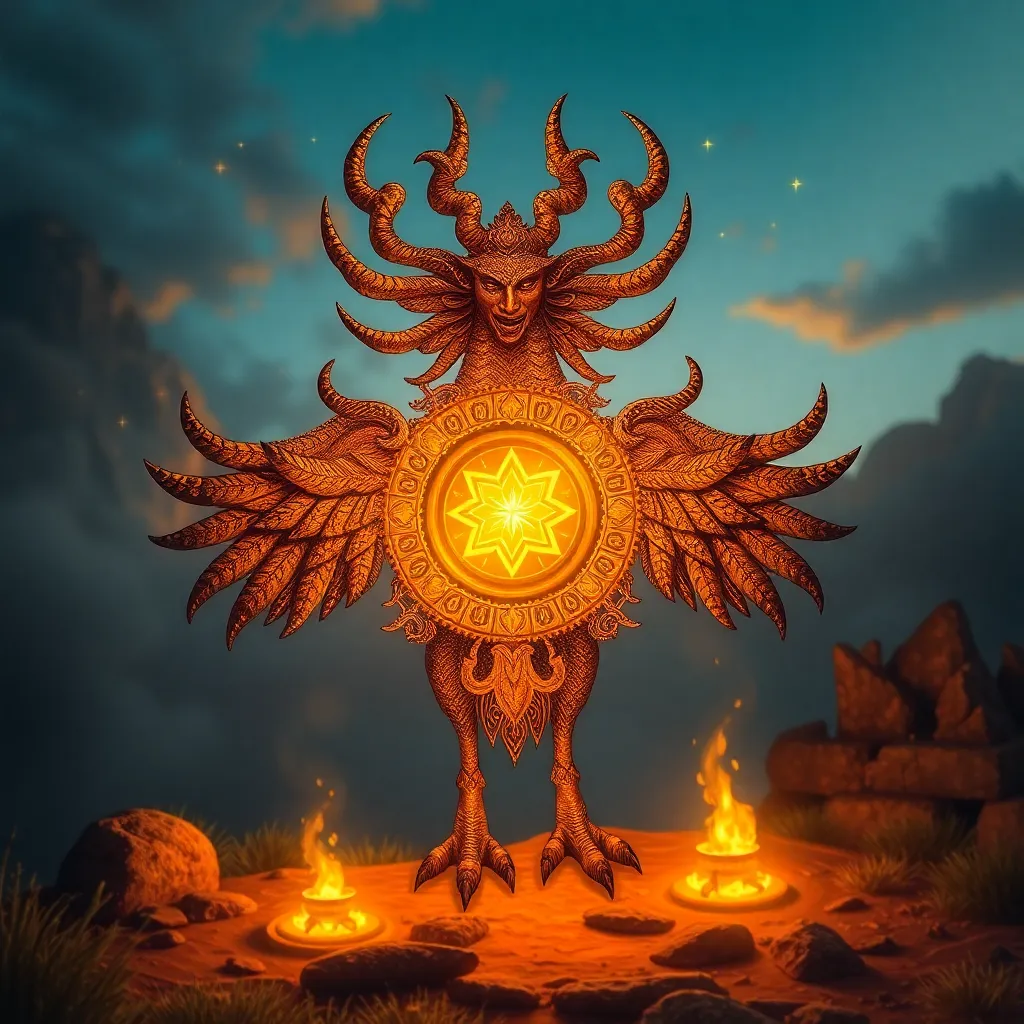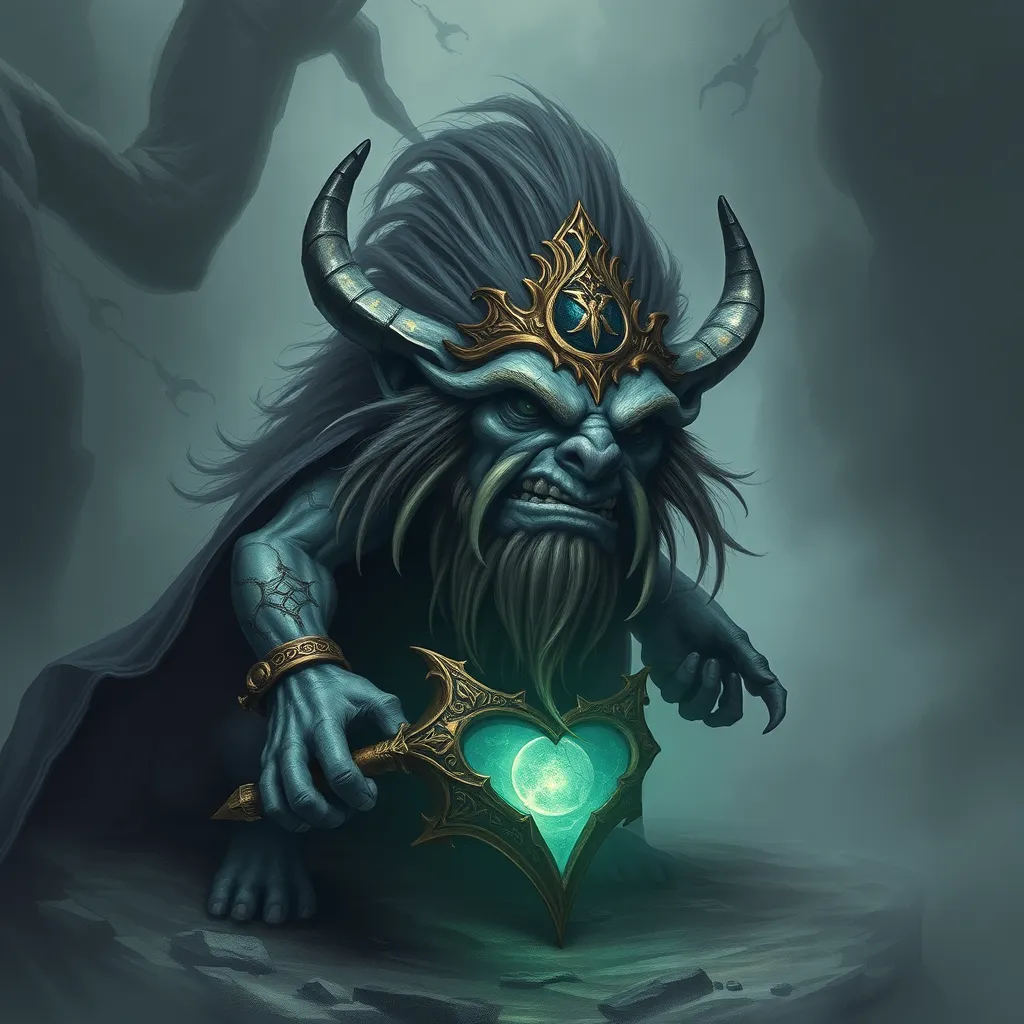The Simurgh’s Prophecy: Exploring its Role in Predicting Destiny
I. Introduction
The Simurgh is a mythical bird deeply rooted in Persian mythology, often depicted as a benevolent and wise creature with the ability to foresee the future. As a symbol of power and grace, the Simurgh plays a crucial role in various cultural narratives, particularly concerning the themes of prophecy and destiny. This article aims to explore the Simurgh’s role in predicting destiny within the context of Persian literature, examining how this mythological figure influences the lives of characters and the broader implications of its prophecies.
II. The Simurgh: A Mythological Background
A. Description and Characteristics of the Simurgh
The Simurgh is often described as a large, majestic bird, sometimes portrayed as a peacock or a griffon, with a long tail and colorful feathers. It is said to possess extraordinary wisdom and knowledge of the universe. Known for its nurturing qualities, the Simurgh is also depicted as a guardian and protector of the natural world.
B. Historical Origins and Evolution of the Simurgh in Persian Literature
The origins of the Simurgh can be traced back to ancient Persian texts, where it first appeared in the Avesta, the sacred scripture of Zoroastrianism. Over time, the Simurgh has evolved, finding a prominent place in Persian epics such as the Shahnameh (Book of Kings) by Ferdowsi. In these texts, the Simurgh embodies themes of wisdom, guidance, and the intertwining of fate and free will.
C. Symbolism of the Simurgh in Various Cultures
The Simurgh transcends Persian mythology, appearing in various cultures as a symbol of transcendence and enlightenment. In Islamic tradition, it represents divine wisdom, while in Sufi literature, the Simurgh is often seen as a metaphor for the soul’s journey towards God. This multifaceted symbolism highlights its importance across different cultural narratives.
III. The Concept of Destiny in Persian Literature
A. Definition and Significance of Destiny in Persian Thought
Destiny, or “qadar,” plays a significant role in Persian thought, often viewed as a predetermined path that individuals must navigate. In Persian literature, destiny is intertwined with moral and ethical considerations, suggesting that individuals are responsible for their choices within the framework of fate.
B. Comparison with Other Cultural Notions of Fate and Prophecy
While the concept of destiny is prevalent in many cultures, Persian literature uniquely emphasizes the balance between fate and free will. Unlike the fatalistic views found in some other traditions, Persian thought often suggests that individuals can influence their destinies through their actions and decisions.
C. The Interplay Between Free Will and Predestination
The tension between free will and predestination is a recurring theme in Persian literature. The Simurgh serves as a pivotal figure that illustrates this dynamic, as its prophecies guide characters while also allowing room for personal agency.
IV. The Simurgh’s Prophecy: Key Texts and Interpretations
A. Major Literary Works Featuring the Simurgh’s Prophecy
The Simurgh’s prophecies are notably featured in several key works, including:
- Shahnameh by Ferdowsi
- Conference of the Birds by Attar of Nishapur
- The Book of Kings by Nizami
B. Analysis of Pivotal Passages and Their Meanings
In the Shahnameh, the Simurgh’s prophetic insights often serve as a turning point for key characters. For instance, in the tale of Zal, the Simurgh provides guidance that enables him to overcome challenges and fulfill his destiny. These passages highlight the significance of the Simurgh not only as a prophetic figure but also as a source of wisdom.
C. The Role of the Simurgh in Guiding Characters’ Destinies
The Simurgh acts as a mentor to various characters, offering counsel and foresight that shapes their journeys. Its role is not merely to predict outcomes but to encourage characters to embrace their paths and make meaningful choices.
V. The Simurgh as a Guide and Mentor
A. The Archetype of the Mentor in Mythology and Literature
The archetype of the mentor is prevalent in mythology and literature, representing wisdom and guidance. The Simurgh embodies this archetype, serving as a bridge between the divine and human realms.
B. Examples of the Simurgh’s Guidance in Stories
In Attar’s Conference of the Birds, the Simurgh guides a group of birds on their quest for enlightenment, symbolizing the search for truth and self-discovery. This mentorship underscores the importance of guidance in navigating the complexities of destiny.
C. The Significance of Mentorship in Shaping Destiny
The Simurgh’s role as a mentor highlights the importance of guidance in shaping one’s destiny. Mentorship can provide clarity, support, and direction, enabling individuals to make informed choices that align with their true selves.
VI. The Impact of the Simurgh’s Prophecy on Characters’ Choices
A. Case Studies of Key Characters Influenced by the Prophecy
Several characters in Persian literature exemplify the influence of the Simurgh’s prophecy:
- Zal – Guided by the Simurgh, he overcomes his struggles and fulfills his destiny as a great warrior.
- Rustam – The Simurgh’s insights help him navigate moral dilemmas and achieve greatness.
B. How the Prophecy Shapes Their Decisions and Actions
The prophecies provided by the Simurgh often lead characters to pivotal decisions that define their fates. These decisions reflect their understanding of their destinies and the extent to which they embrace or resist the guidance offered.
C. The Consequences of Following or Resisting the Prophecy
Characters who heed the Simurgh’s prophecies often find success and fulfillment, while those who resist face challenges and setbacks. This dynamic illustrates the profound impact of the Simurgh’s guidance on their life paths.
VII. Contemporary Relevance of the Simurgh’s Prophecy
A. The Simurgh’s Legacy in Modern Literature and Art
The legacy of the Simurgh continues to resonate in modern literature and art, inspiring contemporary writers and artists who explore themes of destiny, guidance, and the search for meaning.
B. Lessons from the Prophecy in Contemporary Life
The lessons derived from the Simurgh’s prophecies remain relevant today, encouraging individuals to reflect on their paths, make conscious choices, and seek guidance in their journeys.
C. The Ongoing Debate About Destiny and Choice in Today’s Society
The tension between destiny and choice persists in contemporary discussions, prompting individuals to consider the extent of their agency in shaping their lives. The Simurgh’s story serves as a reminder of the delicate balance between fate and free will.
VIII. Conclusion
In summary, the Simurgh’s prophecy plays a vital role in understanding destiny within Persian literature. Through its guidance, characters navigate their fates, illustrating the enduring interplay between free will and predestination. The significance of the Simurgh extends beyond mythology, offering valuable insights into the human experience and the search for meaning in life.



